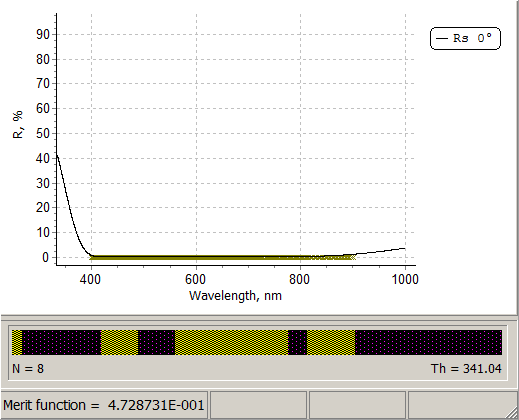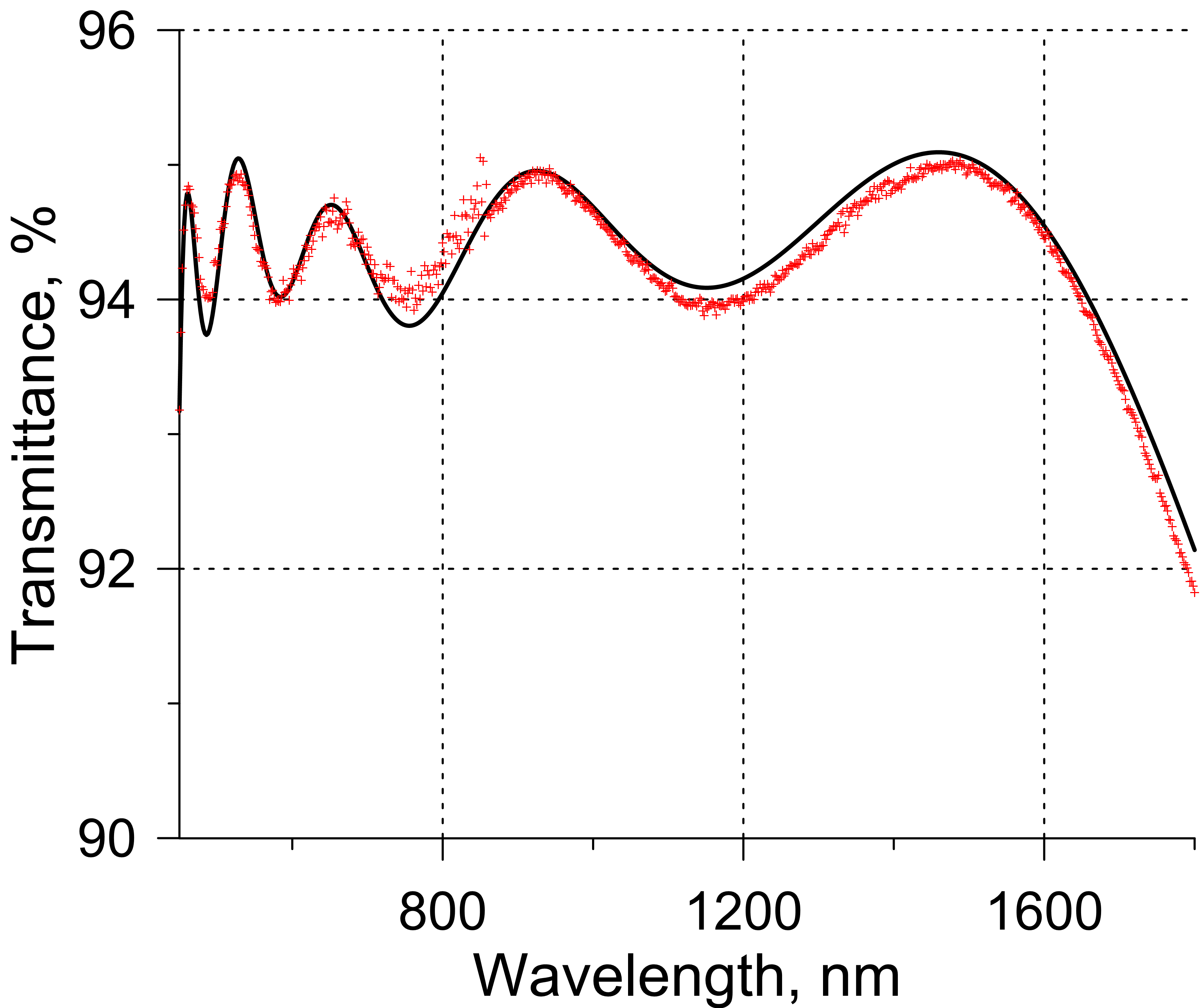
|
Antireflection coatings (AR) are used to reduce the Fresnel reflectance of optical components. In imaging systems, AR coatings improve the efficiency because they provide less light lost. In complex optical systems, the reduction in reflections also improves the contrast of the image by elimination of stray light.
OptiLayer allows designing all types of AR coatings:
|
| It follows from the theory that, at normal angle of incidence and at oblique incidence case (s-polarization), two-component AR designs with the highest and lowest available refractive indices form an optimal class of AR designs.
Residual reflectance of broadband AR coatings is decreasing with increase of optical thickness of the coating and with growing the number of layers. At the same time, there is a lower limit of the residual reflectance. We present a video example of the designing broadband AR coating at YouTube |
It has been shown that there exists the minimum achievable residual reflectance of broadband AR coatings.
This limit depends on:
You can estimate residual reflectance for your design problem here. This formula gives accurate estimations for broadband AR design problems when relative width of AR range is more than 2. |
Example: two-octave AR coating operating in the spectral range from 450nm to 1800 nm. Layer materials are Ta2O5 and SiO2, refractive indices are specified by Cauchy formulas. Substrate is Suprasil. Minimum achievable reflectance can be calculated with the help of this formula with:
The formula estimates minimum achievable reflectance as 1.1% The simplest AR coating contains 10 layers and achieves reflectance equal to 1.6%. This coating was produced at Helios deposition plant. See comparison of the theoretical and experimental data at this picture. The substrate is covered from one side. See the details in our publications on AR coatings: |
 |
|
|
Look our video examples at YouTube
OptiLayer videos are available here:
Overview of Design/Analysis options of OptiLayer and overview of Characterization/Reverse Engineering options.
The videos were presented at the joint Agilent/OptiLayer webinar.